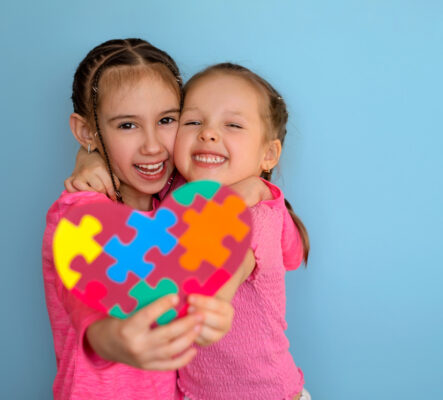
Emotional intelligence refers to the ability to define and manage one’s emotions as well as the emotions of others. This includes identifying and naming emotions in yourself and others, practicing control over emotions, as well as understanding people and environmental situations that might affect your emotions. Processes such as empathy and motivation go right along with emotional intelligence, as well as social interactions with others. Therefore, it is very important to identify ways to help children understand and use emotional identification and regulation in their everyday lives.
How do you know if your child is struggling with emotions?
- With repeated practice, they are still unable to calm down when upset
- Consistent angry outbursts over smaller problems (ex: knocking over a block tower when playing and building)
- Trouble engaging in social interactions that require them to solve problems in a social situation with their peers.
- Struggling with making mistakes, becoming frustrated and not able to move past it.
- Difficulty in identifying emotions in themselves and in others (ex: trouble reading facial expressions, body language, or social cues)
- Challenges with persevering through difficult situations (ex: homework that is hard, sports, social situations that require sharing, etc.)
As adults, when we experience a child having an outburst and label it as a tantrum when it is really an emotional, physical, sensory, and learning process taking place all at once. By identifying ways to help children learn to identify and manage their emotions, we can help them develop the skills they need to succeed in a variety of social circumstances with family, friends, teachers, as well as prepare them better for challenging times ahead. It is important to keep in mind that if your child has been diagnosed with a developmental delay or a condition such as Sensory Processing Disorder, Autism Spectrum Disorder, Attention Deficit Disorder, etc, just know that likely challenges will occur in this area as it is all somewhat connected. Here are some options that are often used in classrooms, therapy practices, and in home daily with children:
1.Exploring the Zones of Regulation
This curriculum introduces emotions, the program aims to teach how certain emotions feel in your body and provide strategies for solving problems related to emotions. To read more about this program and for free printable options, click here.
2. Social stories
This is a great option for children when they are struggling in various social settings when it comes to dealing with emotions and problem solving, navigating a new or unfamiliar situation, or handling problematic behaviors. Creating stories to help walk a child through certain social situations and how they might act, feel, or respond to others’ feelings can set the stage for successful emotional regulation.
3. Playing Games
When we play certain games with our children it can give an opportunity to work on identifying emotions in others and managing emotions when in challenging situations. This is also good practice for handling frustration when things do not go as planned, if a child loses a game, etc. Often, working on emotional regulation and emotional intelligence also means working on a child’s motivation and perseverance too.
For more ideas, inspiration, and all things therapy related – check out our Pinterest!
Little Spurs Autism Centers offers collaborative and compassionate ABA Therapy to children 0-21 years old. Offering both center-based and home-based care, LSAC is excited to empower families by providing them with the support they need. For more information, please email us at autism@littlespurs.com



